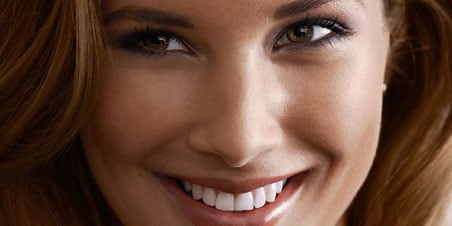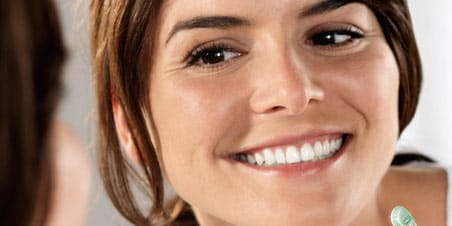Stained teeth 101: How to remove stains from teeth
4 min. read
Brown spots on the teeth or yellow stained teeth are primarily cosmetic problems. While they say little about the overall health of our teeth, discoloured teeth are not ideal, and certainly aren’t nice to look at. Ultimately, nobody wants to have them. Here we’ll explore the major causes of discoloured teeth, alongside some easy-to-follow advice for how to prevent discoloured teeth: Additionally, we will show you how to clean stained teeth both at home and professionally. So, read on to discover everything you need to know about this unwanted oral ailment so that you can get back to your sparkling smile.
The top five causes of stained teeth
We know you really want to know how to remove yellow stains from teeth, but let’s first talk about what causes tooth discolouration in the first place. Getting to the bottom of what causes the discolouration will not only help you fix it but prevent it in the future too. The five main causes of discoloured teeth are:1 Substances contained in these foods and stimulants interact with the bacteria in our mouth which settle on our teeth as stubborn plaque. In cases where the plaque is not removed or is inefficiently dealt with, it can cause discolouration, as well as damage to the enamel and surrounding gums.
Tip: If you notice that your children have discoloured teeth, it’s important to take them to the dentist. Tooth discolouration in children could also be a sign of problems with teeth development.
How to prevent the onset of discoloured teeth
Now that you know what causes discoloured teeth, it’s time to explore how to prevent those unpleasant stains from occurring. The most important step in preventing tooth discolouration is an efficient and thorough oral hygiene routine. In addition to retaining the natural white of your teeth, this will also aid in your overall oral health. The steps to maintaining good oral care and prevent stained teeth are:3
Tip: The best way to remove stains from teeth is to remove the plaque using a modern sonic toothbrush, such as the Philips Sonicare DiamondClean. It removes up to ten times more plaque in hard-to-reach places* and helps you to protect your teeth from discolouration.
Tip: In addition to diligent oral hygiene, you should have your teeth professionally cleaned regularly at the dentist. The CDC recommends you visit your dentist at least once a year,3 which will not only ensure your teeth remain stain free but also help to avoid gum disease and other unwanted oral infections and illnesses.
It’s not just good oral hygiene that can help you steer clear of stained teeth. Some simple changes to your lifestyle can also help to prevent discoloured teeth:

Recommended products
-
- Up to 10x more plaque removal*
- Up to 7x healthier gums**
- Pressure sensor
- 4 modes & 3 intensities
-
- Quad Stream technology
- Pulse waves guide as you go
$219.00*
How to remove stains from teeth both at home and professionally
By following our above-mentioned tips, you’re creating the best conditions for naturally white teeth and a beautiful smile free from discoloured teeth. However, if you are still suffering from less-than-perfect stained teeth, you’ll need to know how to remove brown stains from teeth and yellow discolouration too. There are two main ways to remove stains from teeth: In just ten simple steps we have shown you the causes of yellow or brown spots on the teeth, how to remove yellow stains from teeth, and of course how to prevent the onset of discoloured teeth in the first place. Now all you need to do is implement our tips to ensure your teeth are Hollywood smile ready every single day. *Based on two brushing cycles of two minutes each per day in the Clean-Program Sources: 1 https://www.webmd.com/oral-health/guide/tooth-discoloration
Tip: Dentists don’t recommend using home remedies such as natron – also known as activated carbon – or freely available bleaching solutions, despite their popularity. Improper use or overuse of these could harm the teeth over time.8
2 https://www.nidcr.nih.gov/health-info/tooth-decay
3 https://www.healthhub.sg/live-healthy/1091/oral-health-quick-tips
4 https://www.ncbi.nlm.nih.gov/pmc/articles/PMC3509470/
5 https://pubmed.ncbi.nlm.nih.gov/6497322/
6 https://www.healthxchange.sg/head-neck/oral-health/brushing-teeth-tips-tricks
7 https://www.ncbi.nlm.nih.gov/pmc/articles/PMC1079878/
8 https://www.ncbi.nlm.nih.gov/pmc/articles/PMC4058574/







